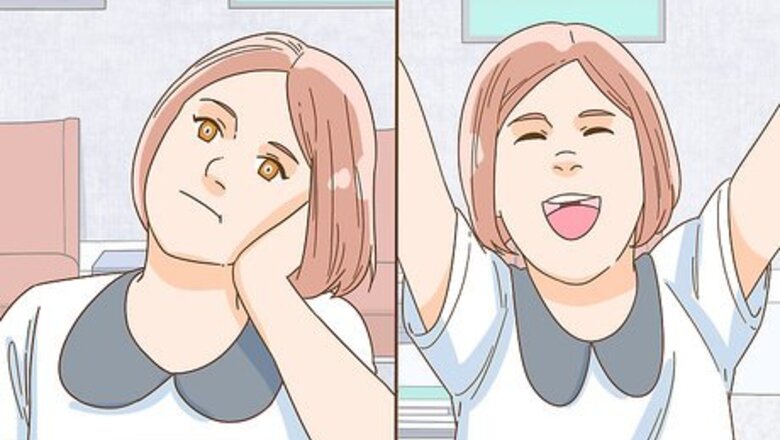
views
X
Trustworthy Source
National Institute of Mental Health
Informational website from U.S. government focused on the understanding and treatment of mental illness.
Go to source
People with ADHD focus differently from people without it, and like many neurological conditions, people with ADHD tend to process and interact with the world around them in unique ways. If you think you or someone you know might have ADHD, it can help to know the signs so you can have a productive discussion with your doctor.
Recognizing ADHD in Children

Understand the ways ADHD can present in children. ADHD is a broad spectrum and looks different for everyone, but it's usually more pronounced in children, who have less ability to manage their behavior than adults. Children with ADHD can be primarily hyperactive, primarily inattentive, or both hyperactive and inattentive. Some kids with ADHD are energetic, talkative, impulsive, and have trouble settling down. These are considered hyperactive traits. Other kids with ADHD are forgetful, "space out" a lot, have trouble completing things, and lose things a lot. These are considered inattentive traits. Most kids with ADHD experience a mix of these, but some lean more hyperactive or inattentive. Did You Know? Boys and girls experience ADHD differently. Boys are more likely to have hyperactive traits of ADHD, whereas girls are more likely to display traits of inattentive ADHD.

Analyze the child's focus. Focusing is difficult for kids with ADHD, regardless of the subtype. They may be too antsy to pay attention, off in their own world, or so focused on something that they don't notice anything else. A child with ADHD might regularly experience things like: Needing to fidget or get up to focus; being unable to focus when sitting still Getting lost in thought Being frequently distracted by something nearby Often needing to be refocused Getting bored easily when disinterested, and "zoning out" or "acting out" as a result Hyperfocus: getting so engaged in an activity that they don't notice anything else
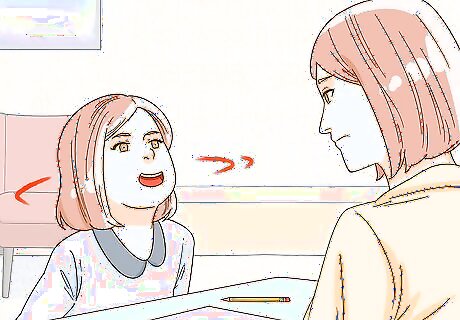
Consider whether the child follows instructions and/or completes tasks. Chores, schoolwork, and multi-step instructions can be tough for kids with ADHD. They might have trouble getting started, not finish things, or seem easily derailed. Taking a long time to start things, or never starting them Trouble following through; starting but not completing tasks Being easily drawn away from activities Struggling with directions; not waiting for instructions, missing them, or forgetting them (and repeatedly asking for them) Difficulty with multi-step directions; doing things out of order or forgetting parts Having lots of ideas for something, but then not completing them Not fully completing something (e.g. finishes a worksheet, then loses or forgets it) Needing an adult to sit with them or help them complete somethingIncomplete tasks aren't always due to ADHD. The child may be resisting the adult, not understand the instructions, or have another condition that makes it hard to complete the task (like a learning disability or anxiety). Rule out other possibilities first.
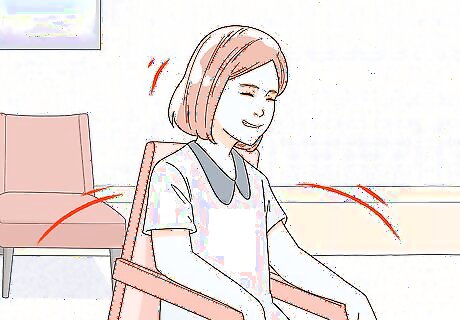
Look for constant movement. While not all kids with ADHD are physically hyper, some are more energetic than other kids their age. They might be extremely restless and always need to move around, or they might be fidgety compared to their peers. Obvious restlessness: fidgeting when sitting, getting up when they should be seated (e.g. during movies), climbing on things, being too active to sleep Subtle fidgeting: hair-playing, bouncing feet, chewing things, picking at things with their nails, stimming Inappropriate activity for the setting, like climbing on their desk during class Poor sleep; trouble falling asleep, waking during the night, or trouble waking Redirecting their energy (e.g. volunteering to pass out papers) Many kids with ADHD are not hyperactive. A child with inattentive ADHD may not show any signs of hyperactivity, or only display minimal signs (like needing to tap their foot).

Assess how much they talk. Kids with ADHD may talk significantly more (or, in the case of inattentive ADHD, less) than their peers. They might appear extremely outgoing or very shy, and potentially get in trouble for talking during class. Extreme chattiness, especially compared to peers Dominating and/or steamrolling conversations Interrupting and/or talking over others Derailing conversations; saying unrelated things or constantly changing subjects Talking when it's not appropriate, like during class Trouble listening; interrupting, being easily distracted, or seeming forgetful Appearing shy; not talking much, and not joining groups or conversations Did You Know? Chattiness is a form of hyperactivity, and is extremely common in girls with ADHD.
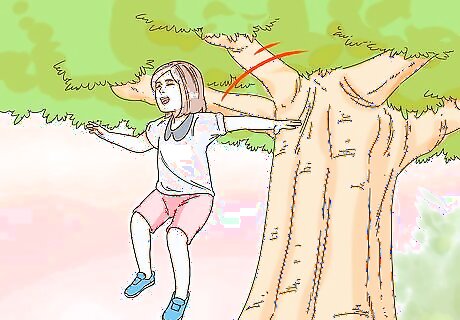
Take note of impulsivity. Kids with ADHD may be far more impulsive than their peers, and not think their actions through. They may get in trouble or scolded frequently, or often asked "what were you thinking?". Impulsive behavior can look like: Blurting things out or interrupting, even though they know they shouldn't Reacting to situations without thinking it through, like yelling or hitting when upset Doing dangerous things, possibly to the point of needing frequent supervision (e.g. climbing shelves) Being impatient, having trouble waiting their turn, or "has to have it now" Correcting or talking back at authority figures (e.g. insisting their teacher is wrong)
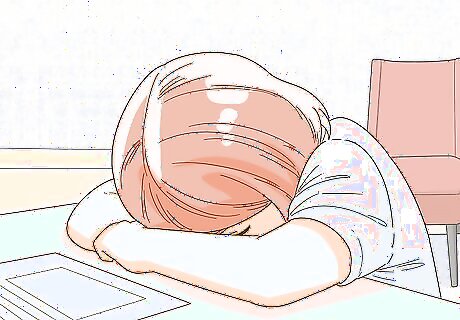
Consider the child's time management skills. It can be extremely difficult for kids with ADHD to budget their time, and this can cause trouble with school or activities with set times and deadlines. Time management problems can include: Frequently being late for school or extracurricular activities; often isn't ready on time Taking longer to do things than it would take their peers (and not because they have trouble with the task) Losing track of time frequently Problems transitioning from one activity to the next; getting frustrated when not ready to change activities Trouble determining how long a task will take Procrastination, waiting until the last second to do something
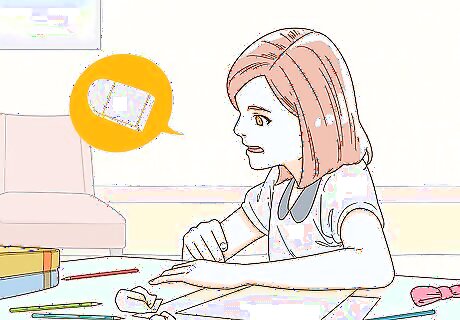
Spot struggles with organization. Many children with ADHD are messy, disorganized, and often lose things. They may try very hard to stay organized, but can't seem to do so without help. Common problems with organization include: Losing things frequently, even if they're important Trouble prioritizing or doing things in order of importance Having a messy desk or backpack at school, or a messy room at home Not cleaning up after themselves (may get sidetracked when asked to do so) Leaving things in the wrong places, or forgetting where they put things
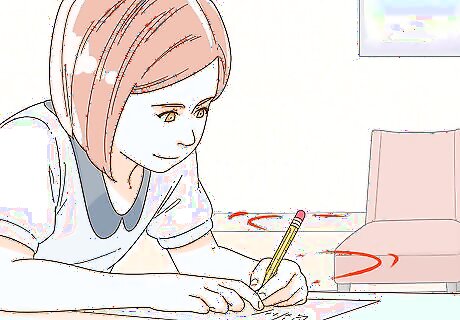
Consider attention to detail. Kids with ADHD are more likely to miss obvious details than their peers. They might overlook mistakes in their schoolwork, which can be mistaken for carelessness. They may frequently get notes on their report cards along the lines of "needs to slow down and double-check their work". Some kids with ADHD, particularly girls and older kids, might be perfectionists and very detail-oriented. However, they may focus too much on the details, and perfectionism can lead to stress and lost sleep.

Look at how the child behaves with their peers. Some children with ADHD are well-liked and popular, while others are disliked or victims of bullying. Some kids might be outgoing and extroverted, while others might seem shy and keep to themselves. Regardless, ADHD tends to impact social relationships. Kids with ADHD might overlook social cues, interrupt, change subjects a lot, or be easily distracted from conversations. Their peers may misinterpret this as rudeness or insensitivity, and find them "annoying" or "weird". They may have trouble keeping friendships and relationships. They might forget to reply to texts, upset friends with impulsive behavior or emotional reactions, or seem under- or over-involved in the relationship. Middle- and high-schoolers may suddenly lose friends or struggle socially, because the social rules have changed.
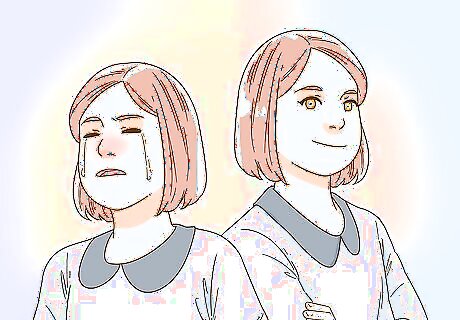
Recognize disproportional emotional reactions and mood swings. Children with ADHD often feel their emotions very intensely, and may have extreme reactions compared to their peers. Their moods may change dramatically in response to events - like a happy child bursting into tears because a peer teased them. Because of this, kids with ADHD may be labeled as overemotional, too sensitive, or dramatic. Some kids with ADHD become aggressive when upset; they might say mean things, yell and scream, throw things, or hit or kick. Once they've calmed down, they often feel bad about it. Boys with ADHD are more likely to externalize their feelings, like blaming another child for something. Girls are more likely to internalize their feelings, and blame something on themselves.
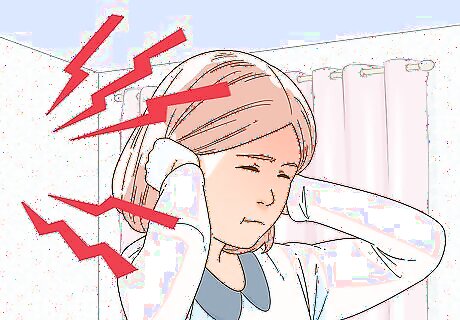
Be alert for sensory or auditory processing struggles. Some children with ADHD have unusual reactions to sensory feedback (like finding shirt tags painful or only eating spicy foods), or have trouble blocking out other sounds to focus on something else. Needing extra time to process speech is also common - they may pause before responding to something, or not react quickly to commands or warnings (like "watch out!"). Sensory or auditory processing issues aren't universal or unique to ADHD, but many kids with ADHD have them.

Note behavioral changes as the child grows older. Once they reach puberty, kids with ADHD usually still struggle with attention and organization, but they tend to become less physically restless. But preteens and teens with ADHD may struggle with increased academic work or social demands, and can begin showing signs of anxiety or depression, particularly if they lack support. Preteens and teens with ADHD are at a higher risk of substance abuse, mental health problems, eating disorders, risky behaviors (like unprotected sex), or self-harm and/or suicide. Supporting your child and communicating openly can reduce the risk of these. It's very uncommon for children to "outgrow" ADHD; studies have found that between 67% to 75% of children still have traits of ADHD in adulthood. However, many children and teens develop strategies for managing their ADHD, so it may seem less severe with age.
Recognizing ADHD in Adults
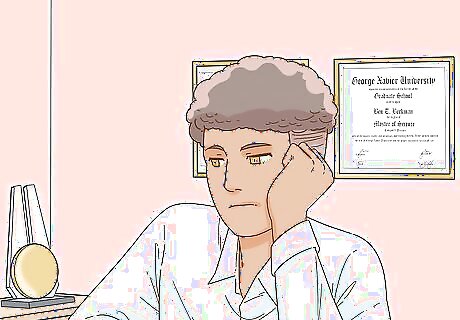
Understand the ways ADHD can present in adults. By adulthood, ADHD is often less apparent, due to learned behaviors and ADHD changing with age. However, it often still impacts the person's life. Like with children, adults with ADHD can be primarily hyperactive, primarily inattentive, or both hyperactive and inattentive. Hyperactive traits include restlessness, frequent boredom, and a constant need to be doing something. Inattentive traits include disorganization, procrastination, and difficulty with time management. Many adults have a mix of hyperactive and inattentive traits, though they can lean more hyperactive or inattentive.Did You Know? ADHD can go undiagnosed until adulthood. Some people manage fine in childhood, but then struggle when faced with increased demands - such as when they begin college, get a job, enter a relationship, or have children.
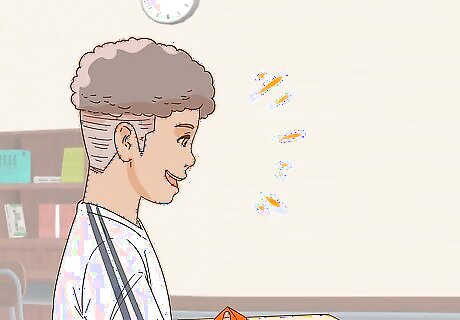
Consider whether the person showed signs in childhood. Signs of ADHD are present by age 12, even if they weren't recognized at the time. ADHD cannot develop in adulthood, so if the person showed no signs of ADHD in childhood, they don't have ADHD.

Analyze the person's focus. While adults with ADHD may be able to focus where needed, it's often quite difficult for them. It may not be extremely obvious if they're "drifting off", because most adults know how to look busy, but it usually becomes apparent with a closer look at their work habits. Procrastination; doing things last-second and/or missing deadlines Needing to fidget or move to focus Being easily sidetracked Getting distracted by their own thoughts Often accidentally "zoning out" Abandoning many projects due to loss of interest; having half-completed projects lying around Use of avoidance strategies (e.g. diverting tasks to someone else)
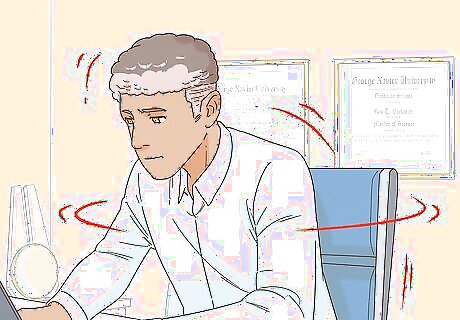
Look at how much activity the person needs. Though hyperactivity is usually less pronounced in adulthood, adults with ADHD may still be quite fidgety or restless. The person may: Pace when standing, and fidget or change positions often when sitting down Be uncomfortable being still for too long Get up from their seat, or feel the urge to Feel compelled to always be doing something; having trouble relaxing Be frequently bored Seek constant stimulation (e.g. speeding or being around energetic friends) Avoid sedentary activity or work Have difficulty falling asleep; they may struggle to "turn off their mind", or be fairly active at night
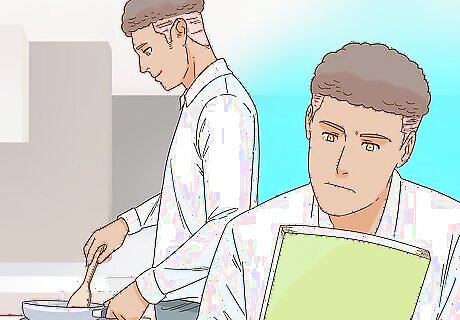
Think about how the person manages tasks. Organizing and prioritizing tasks can be difficult with ADHD, and the person may seem "scattered", pulled in many different directions, or focused on the wrong things. They may have trouble finishing things or meeting deadlines. Trouble starting or finishing activities Difficulty transitioning from one task to the next Drifting between activities, or doing things out of order Problems multitasking, frequently multitasking, and/or inefficient multitasking (e.g. going through papers while cooking) Difficulty budgeting their time Struggling to manage or complete large projects Starting new, unrelated activities (often due to distraction) Doing the bare minimum, because they're overwhelmed or swamped

Look at organization. It's very common for adults with ADHD to struggle with organization - they may have a messy house, an untidy desk at work, and a wallet or purse that's full of clutter. Oftentimes, no matter how much they try to get organized, they never feel like they can do it. Due to messiness and difficulty keeping track of things, they may frequently lose or forget things, even if they're important (like medical records, keys, or paychecks). The person is likely to be self-conscious about this. For instance, they may not invite others to their house because of the mess.
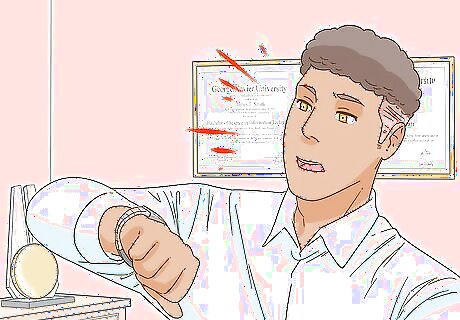
Consider time management. Difficulty with time management is extremely common in adult ADHD. Someone with adult ADHD might seem like they plan out their days poorly (or don't plan ahead at all), be overly busy, or appear to be constantly doing things at the last minute. Being late often, or compensating by always being early Frequently losing track of time Needing a long time to complete things Inaccurately estimating how long something will take Not seeming to have a schedule; doing things "on the fly" Overscheduling themselves; canceling plans last-second or seeming "stretched thin"
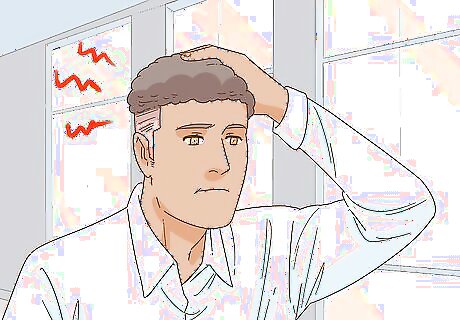
Note forgetfulness. Memory issues can be a problem for adults with ADHD. If they don't set reminders, they may forget about important things, such as plans with friends, meetings, appointments, and birthdays. On a smaller scale, they may have difficulty remembering things like bills, names, or what they were talking about a few minutes ago. Others might misinterpret this as laziness, irresponsibility, or not caring. Did You Know? Forgetfulness isn't always due to inattention. ADHD often comes with working memory deficits - meaning that the brain has difficulty storing and recalling information, even if the person was paying attention.
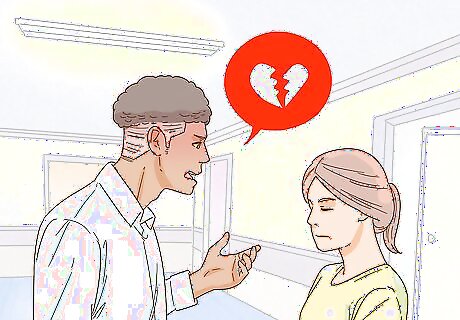
Consider impulsivity and impatience. Impulsivity can be common in adult ADHD, and can result in snap decisions or actions that the person may not be proud of later. The person might also be impatient and need immediate gratification, and become antsy or frustrated when having to wait. Impulsivity can affect anything, ranging from tasks to careers to relationships. The person makes decisions based on "heat of the moment" thoughts or emotions, without thinking ahead. Adults with ADHD may dislike small talk or long-winded stories. They may also frequently interrupt, finish people's sentences, or blurt out their thoughts (even if they're not relevant or appropriate). Some adults with ADHD do risky things without thought, like overspending, abusing substances, or having unprotected sex. (This can look like a manic phase of bipolar disorder, but unlike bipolar disorder, adults with ADHD don't feel immune to consequences.) Adults with ADHD are more likely to get into legal trouble, whether that's receiving a speeding ticket or getting arrested.

Analyze the person's moods and temper. Adults with ADHD can be highly emotional, and may be described as hotheaded or short-tempered. They might have strong reactions, which can seem like overreactions to others. Sometimes, the feelings fade off quickly; other times, they can linger, and make the person seem moody for an extended period. Some people with ADHD are easily frustrated, lose their patience quickly, and snap or yell at people frequently. Some adults with ADHD are sensitive to perceived criticism or rejection, and are easily upset or even physically pained by it.
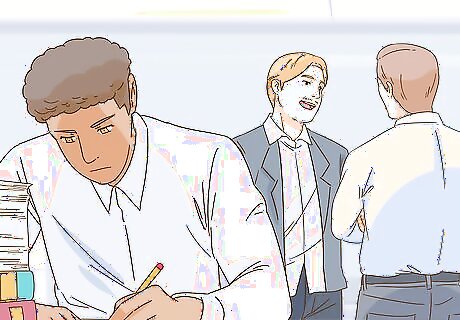
Look at the person's relationships. Many adults with ADHD have friendship and relationship difficulties. They may be people-pleasers, or have trouble making and keeping meaningful relationships. Both chattiness and inattention can impact someone's personal and professional relationships. Irritating others by talking a lot, changing subjects, interrupting, or seemingly not listening Not filtering what they say, and upsetting or offending people as a result Seeming over- or underinvested in interpersonal relationships Accidentally neglecting relationships due to intense focus on something else Seeming "flaky": being late to events, regularly canceling last-second, and/or forgetting to text or call others Forgetting anniversaries, birthdays, or other important events Strained relationships with others, and/or a history of failed relationships (whether platonic, romantic, familial, or professional)Did You Know? Parents with ADHD might have strained relationships with their children, particularly if one or more children also have ADHD. The stress of parenting on top of everyday life can be difficult for them, and without treatment, they may often snap at or argue with their children.
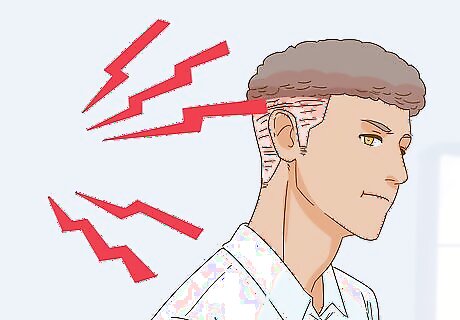
Look for sensory issues. Even if they need lots of stimulation, adults with ADHD might struggle with chaotic environments and be frequently overwhelmed. They may avoid situations where they can't get a break from the chaos - like parties, concerts, bars, and sporting events - because of the overload of stimulus. Auditory processing issues are also common. The person may need extra time to process words or have trouble "tuning out" other noise to focus on something. Like with children, sensory or auditory processing issues don't always mean ADHD, and not everyone experiences them.
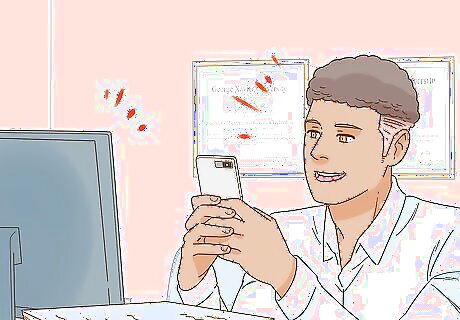
Consider how the person is in the workforce. Once someone enters the working world, ADHD can impact many aspects of a job. For some, ADHD positively impacts their career; for others, it hurts it. Working adults with ADHD may regularly: Be easily bored or distracted Have many ideas for projects Hyperfocus on projects and tasks Have trouble following through or finishing tasks Finish things last-second or miss deadlines Struggle to multitask or switch tasks - or, alternatively, regularly multitask and switch tasks Have trouble with teamwork and/or managing people Get in trouble with coworkers or superiors Lose jobs due to lateness, disorganization, or poor performance Switch jobs, sometimes on impulse Seek high-activity or fast-paced jobs (e.g. restaurant chef or EMT), and avoid under-stimulating ones (e.g. file clerk) Voluntarily work overtime, or work multiple jobs
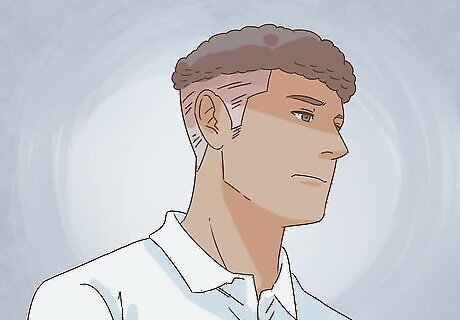
Note problems with self-esteem or mental health. Adults with ADHD can internalize negative ideas or criticism throughout life, especially if they're undiagnosed. If they've experienced repeated struggles and failures throughout life, they may believe that they're lazy, self-centered, stupid, or irresponsible. They often criticize themselves for being unable to keep up with friends or colleagues, and may feel like they're not living up to their potential. Adults with ADHD might experience impostor syndrome: where they feel their successes are flukes and any praise is undeserved. Many adults with ADHD have co-occurring mental health conditions like depression or anxiety. Women may have their ADHD overlooked, and instead be misdiagnosed with depression, anxiety, or bipolar disorder.
Moving Forward
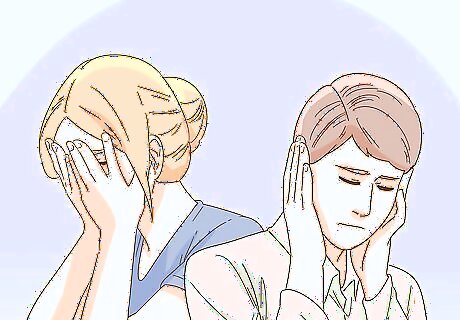
Consider similar-looking conditions. There are many conditions and situations that can look like ADHD, so you may want to research other possibilities as well. Things that can resemble ADHD include: Learning disabilities (e.g. dyslexia, dyscalculia, dysgraphia) Nonverbal learning disability Autism Mental health conditions: bipolar disorder, OCD, anxiety, or PTSD Sensory or auditory processing disorder Oppositional defiant disorder or conduct disorder Sleep disorders Hormonal imbalance or thyroid disorders Stressful or traumatic environment (e.g. enduring bullying or abuse) Giftedness in children Simply being youngTip: If your child is one of the youngest in the class, consider whether their behavior is typical for a child their age, not whether it's typical for their classmates.
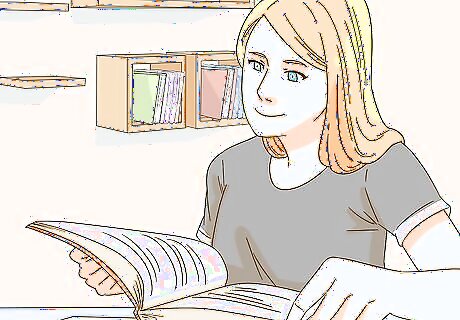
Note co-occurring conditions. ADHD can be standalone, but it often occurs with other conditions too. Conditions that frequently occur alongside ADHD include: Learning disabilities Sensory or auditory processing problems Autism Emotional disorders, such as depression or bipolar disorder Anxiety Oppositional defiant disorder or conduct disorder Tic disorders or Tourette syndrome Substance abuse, in teens and adults
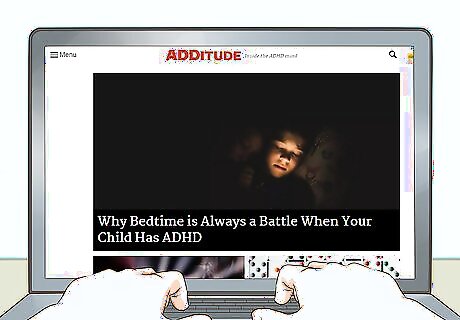
See what people with ADHD have to say. The diagnostic criteria for ADHD can feel detached or vague, and it doesn't address the emotional aspects of ADHD. Try checking out websites like ADDitude Mag and forums for those with ADHD. It can give you a better idea of how ADHD presents in real life, and see if you or your child relate to what's being said. Don't be surprised if you or your child don't relate to everything. ADHD varies based on subtype, age, and sex, and it affects everyone in different ways.

Talk to a doctor for diagnosis. Your doctor may be able to do a basic ADHD screening, but you can also ask for a referral for a psychiatrist or neurologist, who can provide a more thorough assessment. Screenings involve an overview of family medical history, interviews, behavioral questionnaires, and possible further tests that look for traits of ADHD. Alternatively, you can see a psychologist for screening (a referral is not required). You may also want to screen for common or suspected co-occurring conditions, such as learning disabilities or processing disorders. Some psychologists can perform a comprehensive screening that can identify other conditions. Don't be afraid to speak up if you suspect misdiagnosis. Many conditions can resemble ADHD, and it's very common for women and girls with ADHD to be misdiagnosed with depression, anxiety, or bipolar disorder.Tip: If you have anything that might help with the screening, such as school records, ask if you should bring copies of them with you. The information can help the psychologist make an appropriate diagnosis.
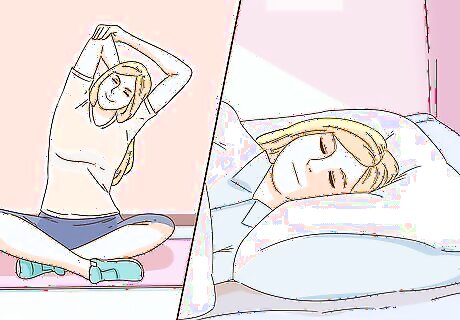
Inform yourself on treatment options. Treating ADHD can result in improved focus and productivity, and decrease any disruptive hyperactivity. Both children and adults with ADHD usually benefit the most from a combination of various treatment methods. Lifestyle adjustments (e.g. changing diet, exercising, and sleeping better) can help with reducing or managing some aspects of ADHD. Therapy can help build coping mechanisms, redirect disruptive behavior, and help parents understand and support their kids. There are also options for co-occurring conditions, like speech therapy or psychotherapy. ADHD coaches or executive functioning coaches help people with ADHD learn to set and achieve goals, improve organizational strategies, and become more productive. Accommodations can help with school or work. Children, teens, and university students often qualify for official accommodations, like IEPs. Accommodations for work depend on the job. ADHD medication can boost the ability to focus and reduce hyperactivity. However, it can also have negative side effects, and stimulant medications can be abused. Talk to your doctor about whether you or your child would benefit from it.Tip: There's no one-size-fits-all treatment for ADHD. It may take some time and trial-and-error to discover what works for you or your child.
Understanding ADHD
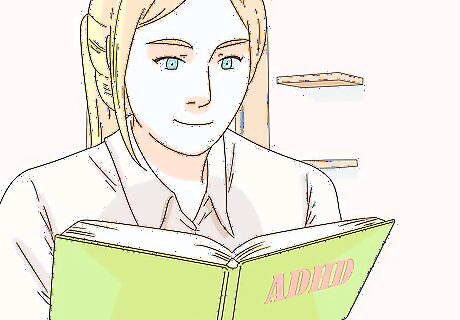
Learn the basic definition of ADHD. At its core, ADHD is a neurodevelopmental condition that affects the ability to focus. Unlike people without ADHD, who can force themselves to do something unpleasant (like paperwork), people with ADHD can't - the ADHD brain has difficulty focusing on things it's not interested in. ADHD is real. Someone who has ADHD isn't undisciplined, lazy, or trying to get unnecessary medication. However, ADHD isn't a mental illness, either. It's simply a different way of functioning.
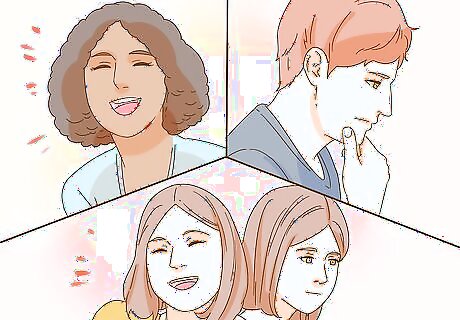
Know the three ADHD subtypes. ADHD consists of three subtypes: hyperactive-impulsive (or just "hyperactive"), inattentive, and combined. Combined ADHD, which is a mix of hyperactive and inattentive traits, is the most common type of ADHD. Hyperactive-impulsive ADHD is characterized by restlessness, chattiness, and impulsivity. Inattentive ADHD (formerly attention deficit disorder, or ADD), is characterized by difficulty paying attention and struggles with organization. ADHD can change over time. For example, someone may show signs of combined ADHD as a child, but only show signs of inattentive ADHD as an adult.
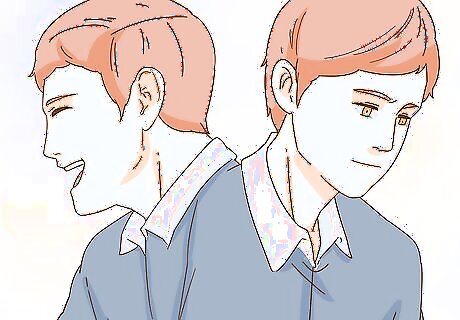
Know the DSM-V criteria for ADHD. In order to be diagnosed with ADHD, someone must have been experiencing traits of ADHD for at least six months prior to age 12, and it must be disruptive in at least two aspects of life (e.g. home and school, or work and relationships). The behavior must not be caused by another condition, and in children, must not be typical for the developmental stage. Inattentive ADHD is characterized by at least six of the following traits (five in those 17 or older): Often does not give close attention to details or makes careless mistakes in schoolwork, work, or other activities. Often has trouble keeping attention on tasks or play activities. Often does not seem to listen when spoken to directly. Often does not follow instructions and fails to finish schoolwork, chores, or duties in the workplace (not due to oppositional behavior or failure to understand instructions). Often has trouble organizing activities. Often avoids, dislikes, or doesn't want to do things that take a lot of mental effort for a long period of time (such as schoolwork or homework). Often loses things needed for tasks and activities (e.g. toys, school assignments, pencils, books, or tools). Is often easily distracted. Often forgetful in daily activities. Hyperactive-impulsive ADHD is characterized by at least six of the following traits (five in those 17 or older): Often fidgets with hands or feet or squirms in seat. Often gets up from seat when remaining in seat is expected. Often runs about or climbs when and where it is not appropriate. Often has trouble playing or enjoying leisure activities quietly. Is often "on the go" or often acts as if "driven by a motor". Often talks excessively. Often blurts out answers before questions have been finished. Often has trouble waiting one's turn. Often interrupts or intrudes on others (e.g., butts into conversations or games). Combination ADHD is characterized by at least six traits of inattention and six of hyperactivity (five traits in each, in those 17 or older).
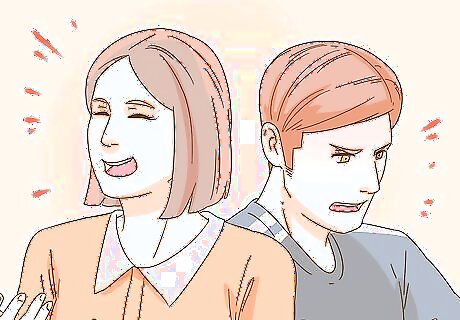
Understand how sex affects ADHD. Anyone can have ADHD, but it's very common for girls to go undiagnosed, because ADHD looks different in boys and girls. Girls with ADHD often have more inattentive traits, and are hyper in different ways. Hyperactive-impulsive ADHD is more common in boys. Inattentive ADHD is more common in girls. Hyperactive girls are more likely to be talkative, interrupt, fidget subtly, and need lots of excitement. Boys tend to express hyperactivity physically, like by running or climbing. Boys are more likely to "act out", behave disruptively, and externalize issues. Girls are more likely to internalize rather than act out, and may have poor self-esteem. Girls often mask their struggles. They may ask for homework help, borrow forgotten things from friends, or stay up late to complete work. However, they can't mask everything, and may be overwhelmed and stressed out. Girls and women with ADHD may have trouble understanding or relating to their peers, and struggle to maintain friendships. They often recognize that they're different from their peers without knowing why. Women are more likely to be screened for emotional conditions, such as depression or anxiety, and not ADHD.
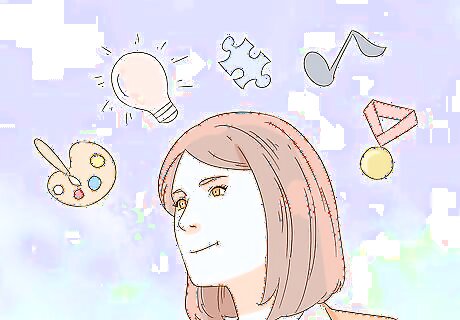
Recognize the benefits of ADHD. Having ADHD doesn't mean every aspect of life is a struggle - there are hidden benefits to having ADHD, as well. Some of these upsides include: Creativity. Those with ADHD are often more likely to find unusual solutions to things, think outside of the box, and/or have many unique ideas. Empathy and compassion. Many people with ADHD feel emotions very deeply, so they often empathize well with others and want to do what's right. Spontaneity and risk-taking. Willingness to do new, unusual things and share what's on their mind can positively impact the life of someone with ADHD. Hyperfocus. When they're really interested in something, people with ADHD can do whatever they put their minds to - whether that's researching something they love, churning out wikiHow articles, or working their hardest in sports. If they can channel their focus, they can do incredible things.



















Comments
0 comment